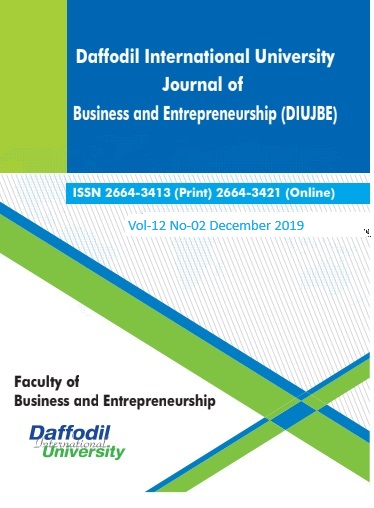Determinants of Financial Stability: Evidence from Listed Commercial banks in Bangladesh
DOI:
https://doi.org/10.36481/diujbe.v012i2.q11fnj40Keywords:
Banks and banking, Nonbank financial institutionsAbstract
Bangladesh should encourage progressing its banking industry to promote economic growth. As a rising country determining financial stability (FS) of banking sector of Bangladesh is a vital issue nowadays.This study examined the factors affecting financial stability in listed Private Commercial Banks (PCBs) in Bangladesh using panel data consisted of five year observations (2012-2016) for each of 28 PCBs listed in Dhaka Stock Exchange (DSE). FS is measured by Altmank Z-score and Pooled Ordinary least square (Pooled OLS) and Panel regression methods have been applied to find out the factors necessary to maintain FS in banks. On the basis of Altman:, Z-score model the study obsened that listed PCBs in Bangladesh are not financially stable. Both regression and Random effect model analysis postulated that Capital to Risk weighted Assets Ratio(CRAR). Non• interest Income to Non-Interest Expense ratio (NIINE), Net Interest Income to Revenue ratio (NI1R) have significant positive contribution to uphold FS on PCBs. Research also found that Total Debt to Total Assets (TDTA) ratio has significant negative consequences on FS of PCBs. This study suggests that PCBs should give more concentration on the positive significant variables CRAB, NINE and NIIR and be more careful to handle the negative significant variables TDTA, LN (SIZE) to improve the FS of banking sector of Bangladesh in the upcoming days.

